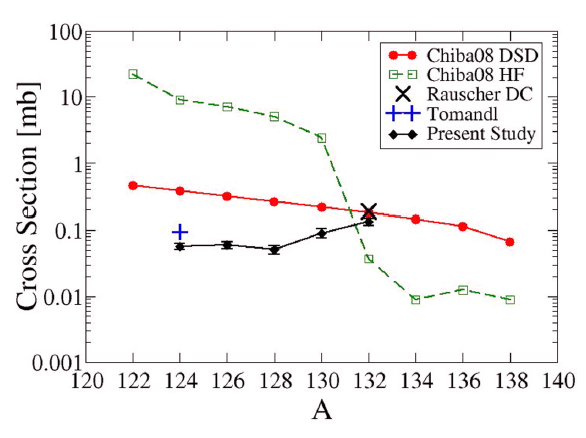
Informing direct neutron capture on tin isotopes near the N=82 shell closure
B. Manning, G. Arbanas, J. A. Cizewski, R. L. Kozub, et al., Phys. Rev. C. 99, 041302(R)
Half of the elements heavier than iron are believed to be produced through the rapid neutron-capture process (r process). The astrophysical environment(s) where the r process occurs remains an open question, even after recent observations of neutron-star mergers and the associated kilonova. Features in the abundance pattern of r-process ashes may provide critical insight for distinguishing contributions from different possible sites, including neutron-star mergers and core-collapse supernovae. In particular, the largely unknown neutron-capture reaction rates on neutron-rich unstable nuclei near 132Sn could have a significant impact on the final r-process abundances. To better determine these neutron-capture rates, the (d,p) reaction has been measured in inverse kinematics using radioactive ion beams of 126Sn and 128Sn and a stable beam of 124Sn interacting with a (CD2)n target. An array of position-sensitive silicon strip detectors, including the Super Oak Ridge Rutgers University Barrel Array, was used to detect light reaction products. In addition to the present measurements, previous measurements of 130,132Sn(d,p) were reanalyzed using state-of-the-art reaction theory to extract a consistent set of spectroscopic factors for (d,p) reactions on even tin nuclei between the heaviest stable isotope 124Sn and doubly magic 132Sn. The spectroscopic information was used to calculate direct-semidirect (n,γ) cross sections, which will serve as important input for r-process abundance calculations.


